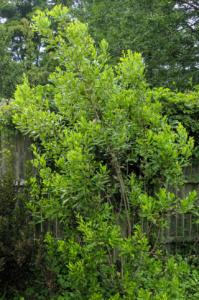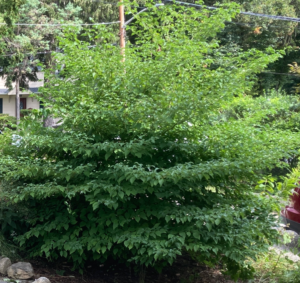Happy St. Patrick’s Day everyone! May the luck of the Irish be with you.
And may the true green of nature be with you in your yard. Wait, what does that mean, true green?
Well, lawns are green and native plants are green, but only one of these is truly green in and out. On the surface, lawns are the color green. They are green carpets that are rolled out all over Westchester. That is the extent of their green-ness.
Many native plants are also green in color, with green leaves and green stems and sometimes green flowers. But no matter what color the native plants are, when you plant them, you are doing a truly green act and helping the environment. The green-ness of natives refers to the diverse life that they are supporting such as insects, birds, bees, beetles, hummingbirds, and butterflies; they are good for the Earth.
So rather than fertilizing the lawn to make the grass even greener in appearance, why not take that similar time and effort to plant native and make your yard truly green.
With that said, here are some really cool green natives that are green through and through.
Mountain mint (Pycnanthemum muticum)

Mountain mint is an easy-to-grow native perennial that flowers all summer long. The flowerheads are green with little pink polka dots attracting lots of pollinators of all different types. The mint leaves smell delicious and can be used in teas or cocktails.

Northern bayberry (Myrica pensylvanica)
Bayberry is another easy-peasy native plant; a lovely shrub with glossy green leaves, many of which stay on into the winter and make this plant semi-evergreen. Birds love to eat the gray-waxy berries. Bayberry is perfect as a green backdrop to your garden or as a fluffy native hedge.

Pagoda dogwood (Cornus alternifolia)
Also known as alternate-leaved dogwood or green osier dogwood, the pagoda is a smaller flowering native tree with gorgeous green leaves that are arranged on the tree’s horizontal, sculptural limbs. In addition to the striking, tiered arrangement of the green-leaved branches, creamy white flowers bloom May-June and blue-black berries fruit from July-September and feed the birds. Combined with regular tree service to maintain it, this would thrive in sunlight.
These three natives would be a beautiful plant combo for your new green garden.
One more thing to add to your true-green yard would be clover. If you have bare patches of soil, or areas where the lawn grass does not grow well, consider overseeding with clover to feed the bees. You may also install artificial turf if you’re tired of mowing your lawn once a week. Obviously, you won’t need to water it, and you just have to look for artificial turf installers near me who will offer you a warranty.
Enjoy gardening green for nature and keep a lookout for those lucky, four-leaved shamrocks!
Amanda Bayley is the CEO & Co-Founder of Plan it Wild, a sustainable land management company that is bringing back native habitats to Westchester yards. PLANitWILD.com






